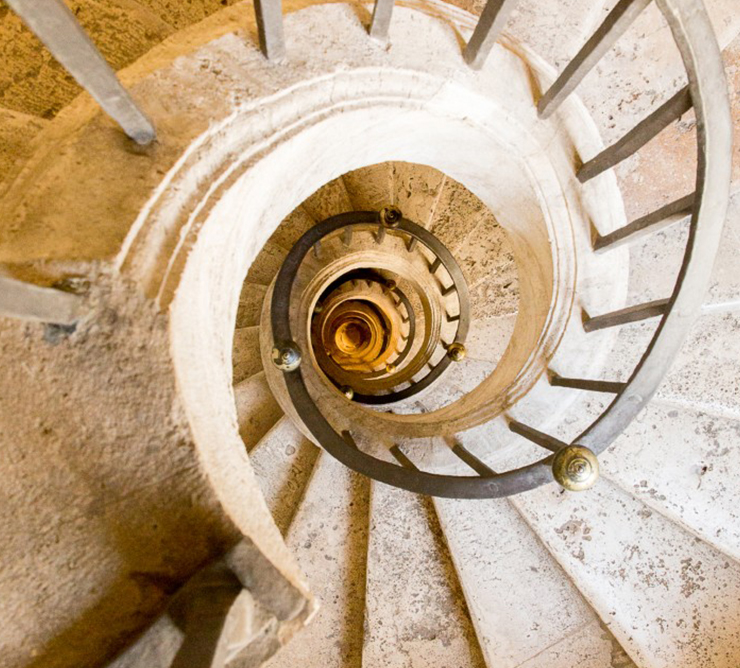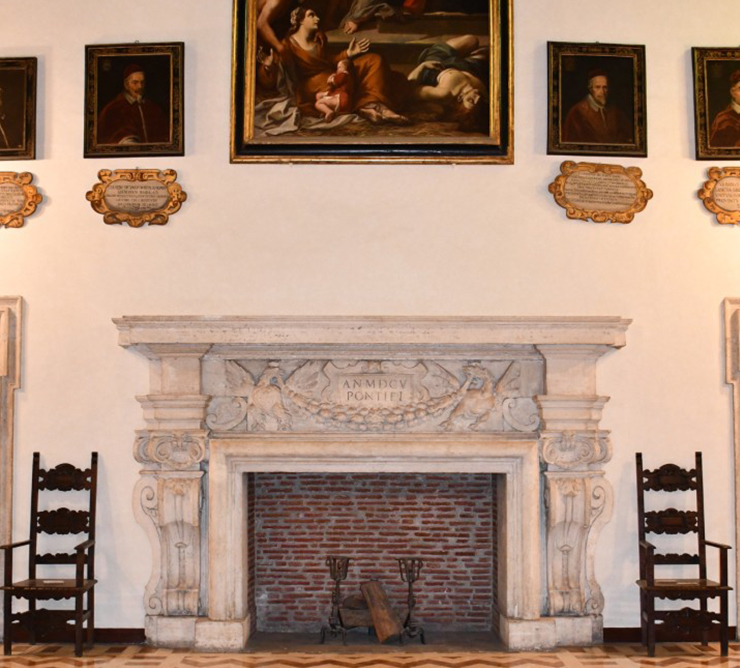Built during the pontificate of Pope Liberius (352-366) who dedicated it to the cult of the Virgin Mary. According to tradition, the Virgin appeared to Pope Liberius in a dream, suggesting that a basilica be built in a place that would be miraculously indicated. So when on the morning of August 5th an unusual snowfall whitened the Esquiline, the Pontiff traced the perimeter of the new basilica in the snow.
The basilica displays various architectural styles, from early Christian to Baroque. The entire building was restored and renovated during the eighteenth century, so the facade and much of the interior date back to that period. Despite this, the church retains the bell tower, some mosaics and marble floors from the medieval era and some Ionic columns from other ancient Roman buildings, as well as splendid mosaics from the 5th century.
The ceiling decoration has been preserved from the Renaissance period, while the domes and chapels belong to the Baroque era. Probably the most surprising aspect of the Basilica of Santa Maria Maggiore are the different parts belonging to such different historical periods. The Basilica contains within it the most important stages of Christian art in Rome.
This visit will allow you to visit the Loggia delle Benedizioni, the Hall of the Popes and Bernini's Staircase, areas of the basilica not always accessible to the public.

The Basilica houses the most important Marian icon, the Salus Populi Romani.
Tradition attributes the image to Saint Luke, Evangelist and patron of painters.
The icon is particularly dear to popular piety and closely linked to the identity of Rome and its Popes. Pope Francis places his apostolic journeys under the protection of the Salus, which he usually visits before departure and after his return. In doing so, it harks back to a tradition of the Jesuits, who since the origins of the Society of Jesus promoted the cult and distributed copies of the icon throughout the world.

Commissioned by Pope Pius IX (1846-78), Roman architect Virginio Vespignani built the Confessio (1861-64) in front of the Papal Altar. Vespignani used some 70 different types of marble, mostly from extractions that occurred concurrently in Rome and Ostia. The Confessio recalls the importance of Saint Mary Major as the Bethlehem of the West and as Rome’s Basilica of the Nativity.
Starting from the Pontificate of Theodore (642-649), native from Jerusalem, it was also known as Sancta Maria “ad Praesepem”. The Title refers to the five pieces of sycamore wood, that were part of the manger upon which Baby Jesus was laid. The wooden pieces are kept in a crib-shaped crystal reliquary designed by Giuseppe Valadier (1802).
hide

During the pontificate of Nicholas IV (1288–92), Saint Mary Major experienced a true artistic flowering. The direction of the mosaic works in the apse was entrusted to Jacopo Torriti.
In the lower register, scenes from the life of Mary were represented: the Annunciation, the Dormitio, the Adoration of the Magi and the Presentation of Jesus in the Temple.
In the upper register Mary is depicted at the moment of her coronation. The images of Jesus and Mary are flanked by eight angels, a seraph and Saints Francis, Peter and Paul (left), John the Baptist, John the Evangelist and Anthony of Padua (right).

The imposing façade, conceived by the architect Ferdinando Fuga, creates a real stage from which to admire the entire square and the mosaics by Filippo Rusuti (ca. 1300), which tell the story of the foundation of the Basilica. On the night of August 5, 358, the Virgin appeared in a dream to a Roman patrician and his wife, promising them that she would make their wish for a child come true thanks to a miracle.
The couple went to visit Pope Liberius, who revealed that he had had the same dream. Taking leave, the couple found a part of the Esquiline Hill covered in snow. The Pope traced the perimeter on which the couple would build the Church with his pastoral staff.
The consecration of today's Basilica took place on the day of the miracle, August 5th and every year there are solemn celebrations with a shower of white petals that are dropped from the ceiling above the main altar.
hide
The Holy Door is located on the left side of the portico and evokes the Jubilees that have taken place in Rome since the year 1300 (every 50 years, and every 25 years from 1470).
The bronze door was made in 2000 and is a symbol of reconciliation with God and a new beginning. It will be reopened during the Holy Year of 2025.

During the pontificate of Leo XII (1823–29), the chapel of the winter choir was transformed by Giuseppe Valadier into a baptistery. For this environment the pontiff donated a basin, used as a baptismal font, in red porphyry, which was enhanced by the surrounding marble balustrad.

The Hall of the Popes is the most representative room of the large architectural project wanted by Pope Paul V (1605-1621).
The room constitutes a sort of Pantheon of the illustrious people linked to it: the Archpriest San Carlo Borromeo, Cardinals, Popes and the royal family of Spain, the Spanish King being the Protocanon of the Chapter.
The elegant spiral staircase, believed to be by “Gian Lorenzo Bernini” is made of travertino stone and connects the five floors of the building with the New Sacristy. It symbolizes the human journey from earth to the heaven and from darkness into light.

La Sala dei Papi è la sala più rappresentativa dell’ampio progetto architettonico voluto dal Papa Paolo V (1605-1621).
La sala costituisce una sorta di Pantheon dei personaggi illustri ad essa legati: l’Arciprete San Carlo Borromeo, Cardinali, Papi e la famiglia reale di Spagna, essendo il Re spagnolo Protocanonico del Capitolo.